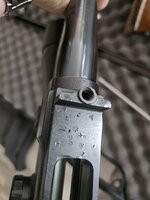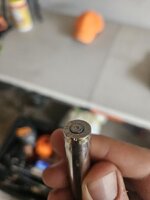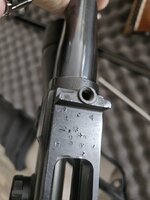hunthikecamp
Lil-Rokslider
Hey all, just curious if there's any old gun or old military gun gurus out there that might have might know a thing or two about my old Springfield 1903 or might have some more resources i can poke around on.

I don't know much about it other than it was manufactured in 1906 based on SN (148XXX), and was sporterized sometime in the 1970s for use as a hunting rifle. https://www.nps.gov/spar/learn/historyculture/u-s-springfield-model-1903-production.htm
Additionally, it's considered a 'low SN' gun so there's a non-zero chance it could blow up in my face but after thoroughly researching it and the stats on failures, as well as the fact that it's been in 'service' as a hunting rifle for over 50 years along with potentially 70 years of varying military service, I'm pretty confident that any brittle fracture failure mode would have presented itself. That being said I do plan to retire it this year and upgrade to a more modern rifle, but was always curious to learn more about it. https://thecmp.org/sales-and-service/m1903-m1903a3-rifle-information/
I've noticed a bunch of random punch marks on the bottom of the receiver and also some more worn away ones further up the barrel and always wondered where the heck these have come from? Punching to indicate some kind of modification or service doesn't seem unreasonable but these seem really haphazard.

Otherwise, I've had some extraction issues occasionally that have almost cost me a few critters via missed follow up shots, and I noticed this on my latest round through it (which ejected normally), any thoughts on what might be going on?


I don't know much about it other than it was manufactured in 1906 based on SN (148XXX), and was sporterized sometime in the 1970s for use as a hunting rifle. https://www.nps.gov/spar/learn/historyculture/u-s-springfield-model-1903-production.htm
Additionally, it's considered a 'low SN' gun so there's a non-zero chance it could blow up in my face but after thoroughly researching it and the stats on failures, as well as the fact that it's been in 'service' as a hunting rifle for over 50 years along with potentially 70 years of varying military service, I'm pretty confident that any brittle fracture failure mode would have presented itself. That being said I do plan to retire it this year and upgrade to a more modern rifle, but was always curious to learn more about it. https://thecmp.org/sales-and-service/m1903-m1903a3-rifle-information/
I've noticed a bunch of random punch marks on the bottom of the receiver and also some more worn away ones further up the barrel and always wondered where the heck these have come from? Punching to indicate some kind of modification or service doesn't seem unreasonable but these seem really haphazard.

Otherwise, I've had some extraction issues occasionally that have almost cost me a few critters via missed follow up shots, and I noticed this on my latest round through it (which ejected normally), any thoughts on what might be going on?





